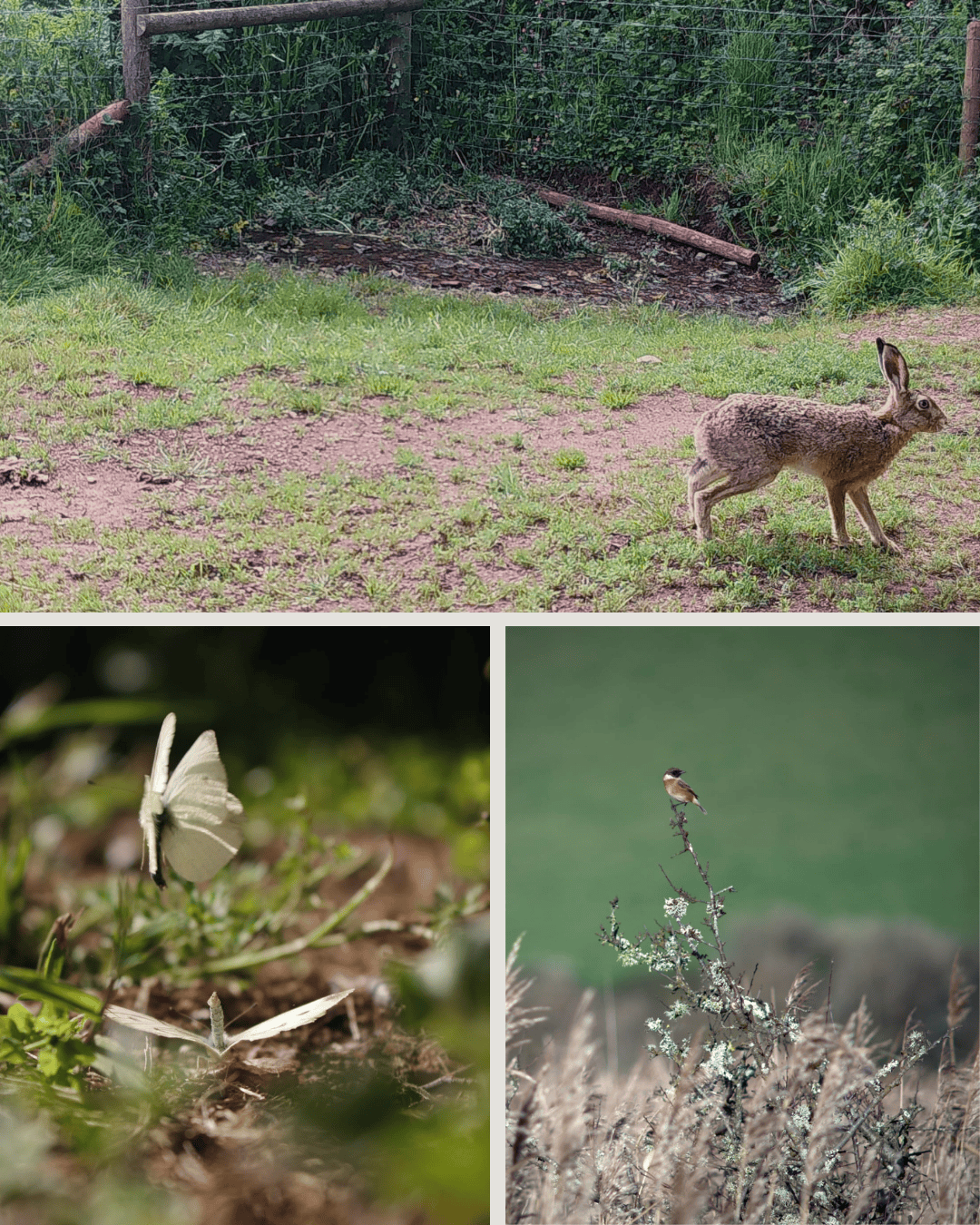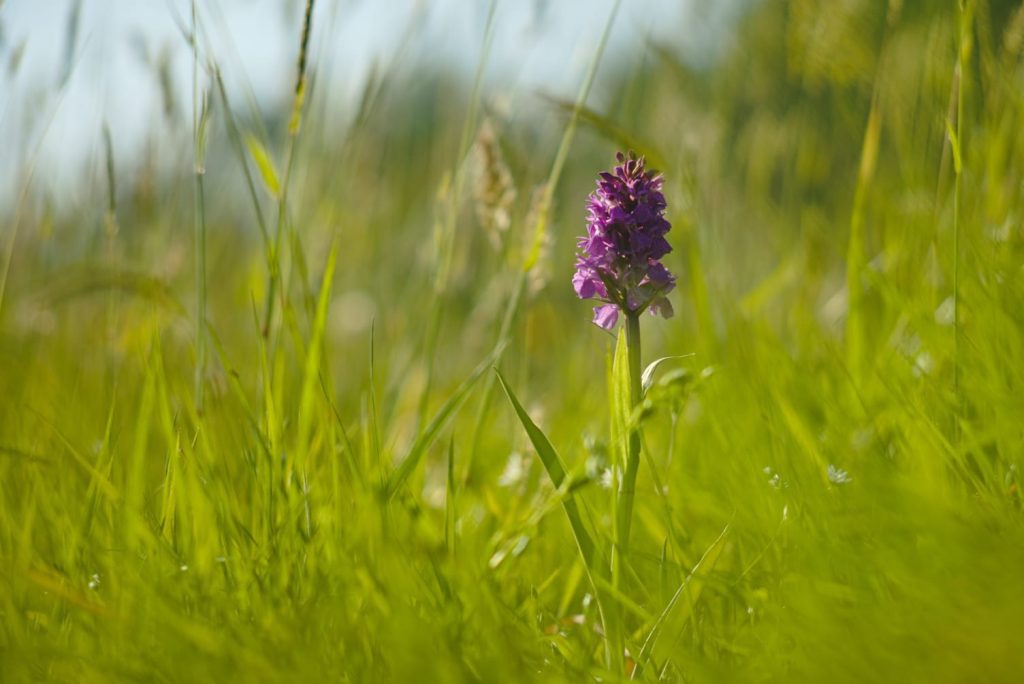As we pass the halfway mark of 2025, it’s a perfect time to reflect on the changes taking root across our rewilding site. We have plenty of exciting observations to report made during the course of our spring/summer traineeship! Read on to discover how biodiversity is bouncing back, what new species have emerged this year, and what all of this means for the future of our rewilding efforts.
Plants
This year sees a bit of a step-up in the vegetation change with the patchwork distribution of different dominant species and species associations developing. It has been particularly striking on the upper slopes to the south of the cycle track where we’ve noticed areas of vegetation dominated by greater bird’s foot trefoil, germander speedwell and common knapweed growing and growing – all great fodder for hoards of bees, wasps and dipterans. This year also sees hogweed doing really well across much of the site, which is great for the little flying critters. Southern marsh orchid has returned on the upper slopes of Middle Tors and also the new arrival of common spotted orchid in the lower part of Spring Field. This suggests that our soils are developing their fungal communities well. Tree regeneration seems to be getting a better foothold this year too.
Insects
Insects have been better this year than ever, and the butterfly numbers have been spectacular. Although this is largely because we’ve had an exceptionally strong year for butterflies generally, the numbers are certainly also down to the progression of the rewilding. This is the first year that we’ve seen the abundance of vanessids reflect the abundance of their caterpillar food plants, in particular nettle. It’s also been particularly heartening to see plentiful small tortoiseshell after seeing virtually none through the last five years. We’ve seen quite a few painted ladies arriving this year too, which is tantalising given Knepp’s creeping thistle story! Solitary bees and bush crickets and grasshoppers have done really well this year. In particular the Roesel’s and great-green bush crickets have been very conspicuous – walking through Lower Brick Meadow, it’s been a riot of great-green chirruping.
Mammals
It’s been an interesting summer mammal-wise. We’ve seen a large scale absence of field vole, almost certainly a normal stage of their population cycle. This seems to fit nicely with the much lower number of kestrel and barn owl sightings that in previous years. No matter – they’ll likely be back in-force next year. Stoat and weasel have both been spotted on the rewilding (I think weasel might be a first for us) and badger has appeared pretty regularly on camera traps suggesting that they are re-establishing on the estate after the losses over the last ten years. It’s been particularly exciting to see hare down on the rewilding for the first time, particularly given that we’ve only ever on spotted them on the surrounding high agricultural land before. So, it looks like hares might like rewilding too! Perhaps it’s giving these super-shy animals the security of cover they need to be on the low-ground so near to lots of people!
Birds
Bird-wise we’ve been pleased to see breeding stonechat and common whitethroat breeding once again and we’ve recorded goldcrest breeding in for the first time. Interestingly we had our first sighting of a cuckoo on the rewilding in June (we normally hear them in March and April on their way north). This is most likely to be a bird on its return to Africa having bred up on Dartmoor already. This winter we’ve again seen a dozen or so Curlew roosting on the lowest part of Lower Brick Meadow. It’s the first time we’ve seen numbers of overwintering Curlews roosting on the rewilding side of the river, and it’s tempting to think that we’ve upped the local capacity of the Dart to support this dwindling species during the winter months.



